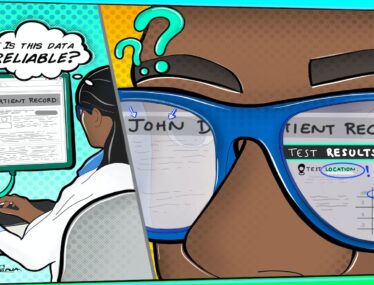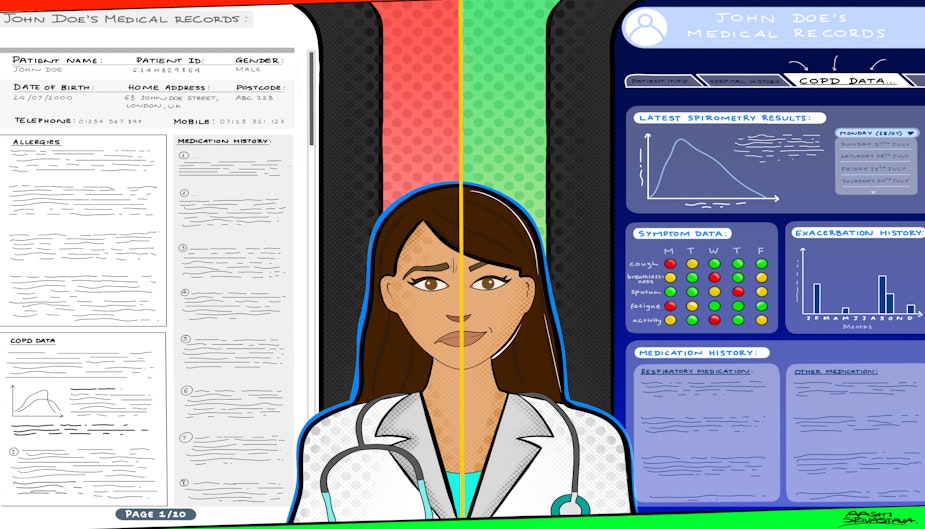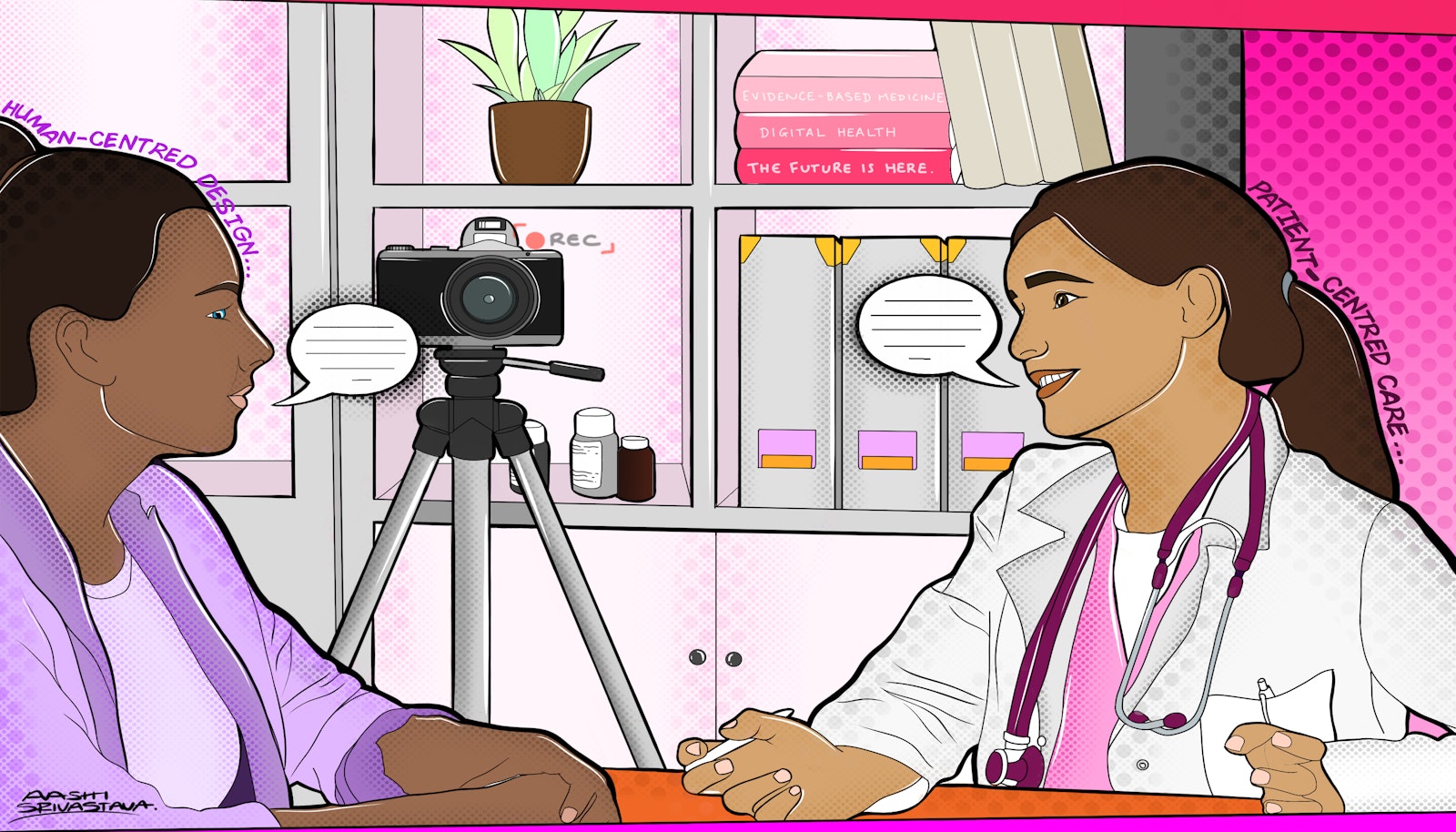Developing digital health solutions with meaningful healthcare data
By Helena Tendedez & Allan Sinclair

Developers of digital health technologies are racing to innovate and improve healthcare. But do they always know enough about the data their platform will be delivering to healthcare professionals to build a digital health solution that will be successful?
Developers of innovative digital health technologies want to provide healthcare staff with timely access to patient data to enable informed care decisions [1, 2]. Google’s Care Studio, for instance, aims to support clinicians by improving access to, and presentation of, patient information held in multiple Electronic Health Records [3]. However, research has taught one of us (H.T.) that, when making decisions in time-pressured working environments, healthcare staff are often selective about the data points they consider based on a range of contextual factors.
The value of each data point is likely to be contingent on the way it is presented, its perceived reliability, interpretability, actionability and other contextual factors. And in the absence of this information, there is a risk that healthcare staff will find it difficult to interpret, trust, and use the data delivered by a digital health platform. Given this, how can developers of digital health solutions build digital health technology that delivers meaningful insight to healthcare staff?
Key points in this blog:
- How healthcare staff interpret patient data
- How to explore the contextual value of healthcare data to build successful digital health platforms
The nuance of health data interpretation
Healthcare staff generally consider multiple data points when making decisions about patient care. One may therefore be led to think that more data will generally lead to better decisions. But the reality is more complex. Healthcare staff are likely to assess, filter, and weigh data differently depending on several, sometimes unspoken contextual factors.
For example, mammogram readers may orient their interpretation of a scan based on the screening centre the scan was produced [4]. Respiratory consultants may place different levels of confidence on spirometry test results depending on where the test was carried out [5]. Nurses may have difficulty interpreting what it really means when a patient remotely scores their mood as a two out of five [6]. Doctors may find it challenging to assess the accuracy and usefulness of a patients’ digitally captured step count [7].
This means that the absence of contextual information about how, where, or by whom the data was collected can influence how healthcare professionals perceive its value. Data that is not seen as actionable, reliable, and relevant to the immediate context may be disregarded altogether. Therefore, the true value of digital health solutions goes beyond simply making data available to healthcare staff but in achieving meaningful and effective capture and presentations within specific contexts.
For the developers of digital health solutions, this means that it is essential to explore how healthcare staff engage with, interpret, and act on data from new technologies. They need to ask questions such as ‘Does the available data generate insight that is relevant, actionable, and trustworthy?’ ‘How do we visualise insight in the most effective way possible to support the use context?’ ‘What type of actions can, and would, healthcare staff make based on this insight?’ and ‘Do they have the tools and opportunities needed for those actions to happen?’
If we are not taking the time to investigate these types of questions, in direct collaboration with healthcare staff, we are making assumptions about the usefulness of any technology. Not only could these assumptions be wrong, but they could also be costly.

Exploring the contextual value of healthcare data
Questions about the contextual value, reliability, and actionability of data can be explored early in the development process. This can be investigated through interviews and contextual inquiry with healthcare staff to understand the care decisions they make each day, the barriers they experience when doing so, and how these barriers can be alleviated. It is also important to understand their pain points with existing data and systems.
Such activities ensure the developers of digital health technologies are aware of the data requirements and associated on-the-ground challenges before the development of a digital health solution begins. This will help to ensure focus on the capture and collation of the right data to solve the challenges that healthcare staff face.
The next step to consider is the actual interpretation and presentation of data.
This can be explored through visual stimulus material. This type of investigation does not have to wait for a first version of a fully developed system before it can occur. Visual stimulus material, such as mock user interfaces populated with realistic dummy data, are a very effective way to support the exploration of key areas with healthcare staff (as discussed in our blog Remote user testing for medical device development).
The creation of stimulus material enables an efficient, rapid, and relatively low-cost way to communicate ideas and provoke thoughts about a concept. The tangible nature of stimulus material helps to facilitate dialogue between developers and healthcare staff about practical and contextual challenges of engaging with data in the working reality.
The flexibility and ease of experimentation with user interface designs using stimulus material helps to support discussions about effective data presentation. Testing and iterating ideas dynamically in this way helps developers to build confidence that their platform provides data in a way that will be interpretable, trustworthy, and actionable for healthcare professionals.
Building successful digital health platforms
So, while the value of data in digital health lies beyond the strings of interoperable 0s and 1s delivered by the technology, the challenge of understanding the contextual value and reliability of data in healthcare can be addressed early in the development of new digital health platforms.
As digital health evolves over the next decade, we may be capturing and sharing new types of data previously unthought of, which will further challenge us to think carefully about the most effective way of communicating this to healthcare staff.
TTP has expertise and a strong interest in designing and building digital health technologies. From developing connected devices to defining digital health strategies, we always strive to deliver human-centred outcomes that take a holistic appreciation of the complex world of healthcare. Please contact us if you would like to discuss this blog or digital health solutions more generally.




